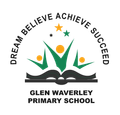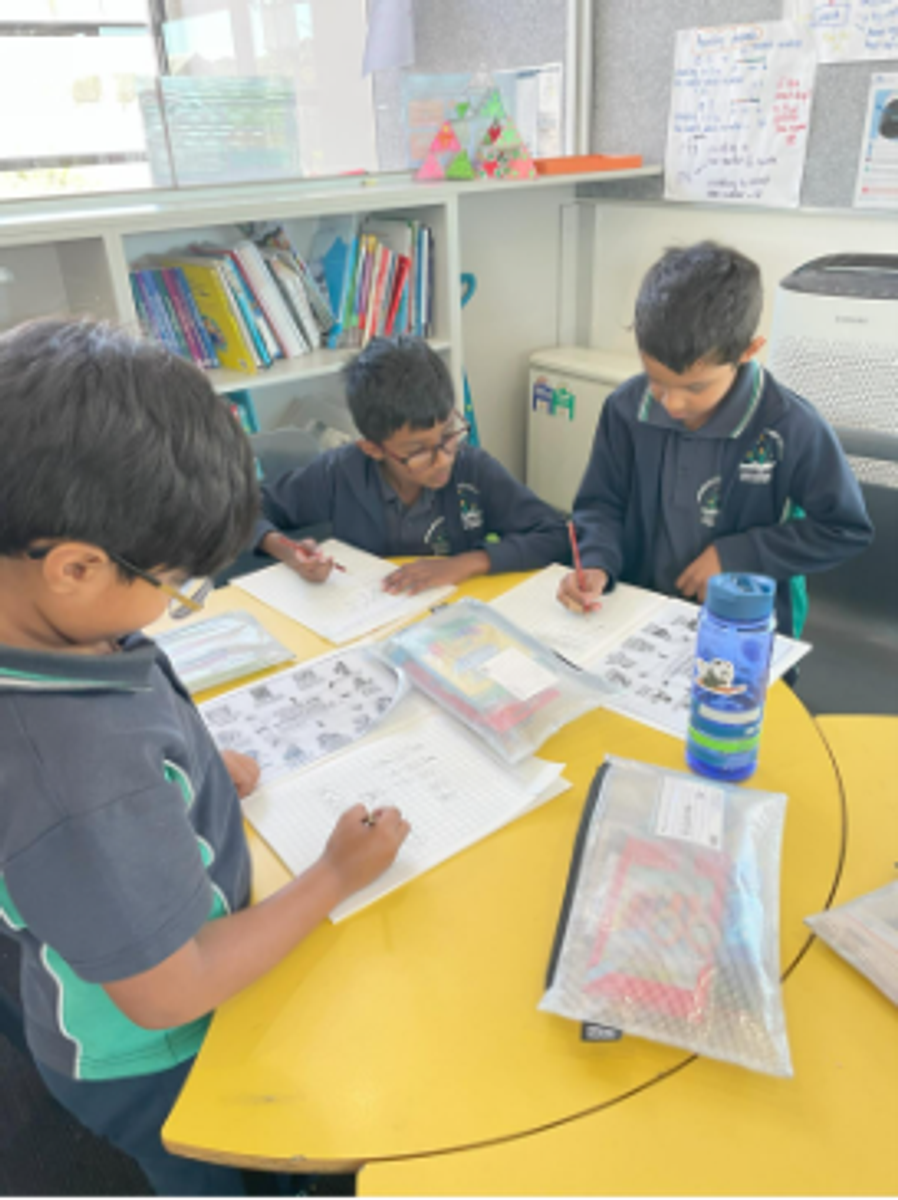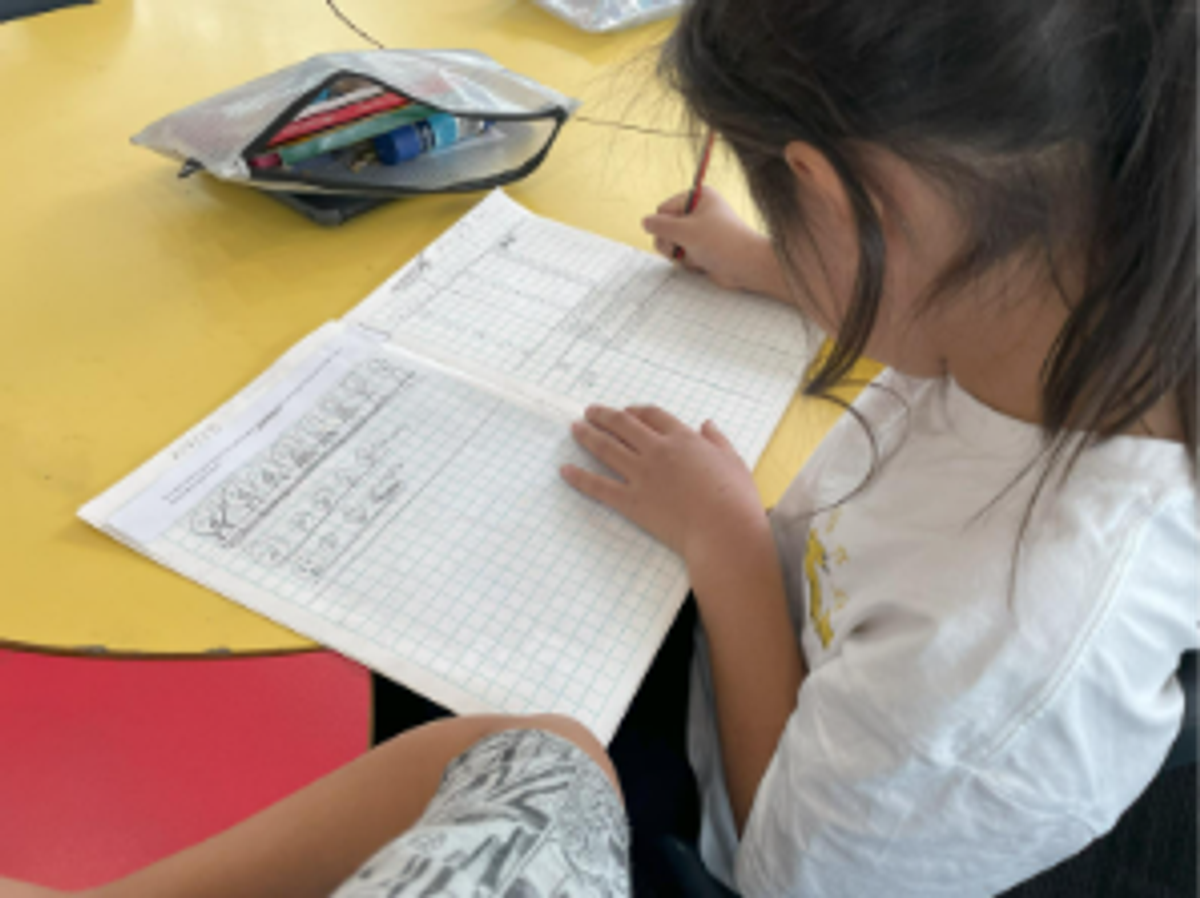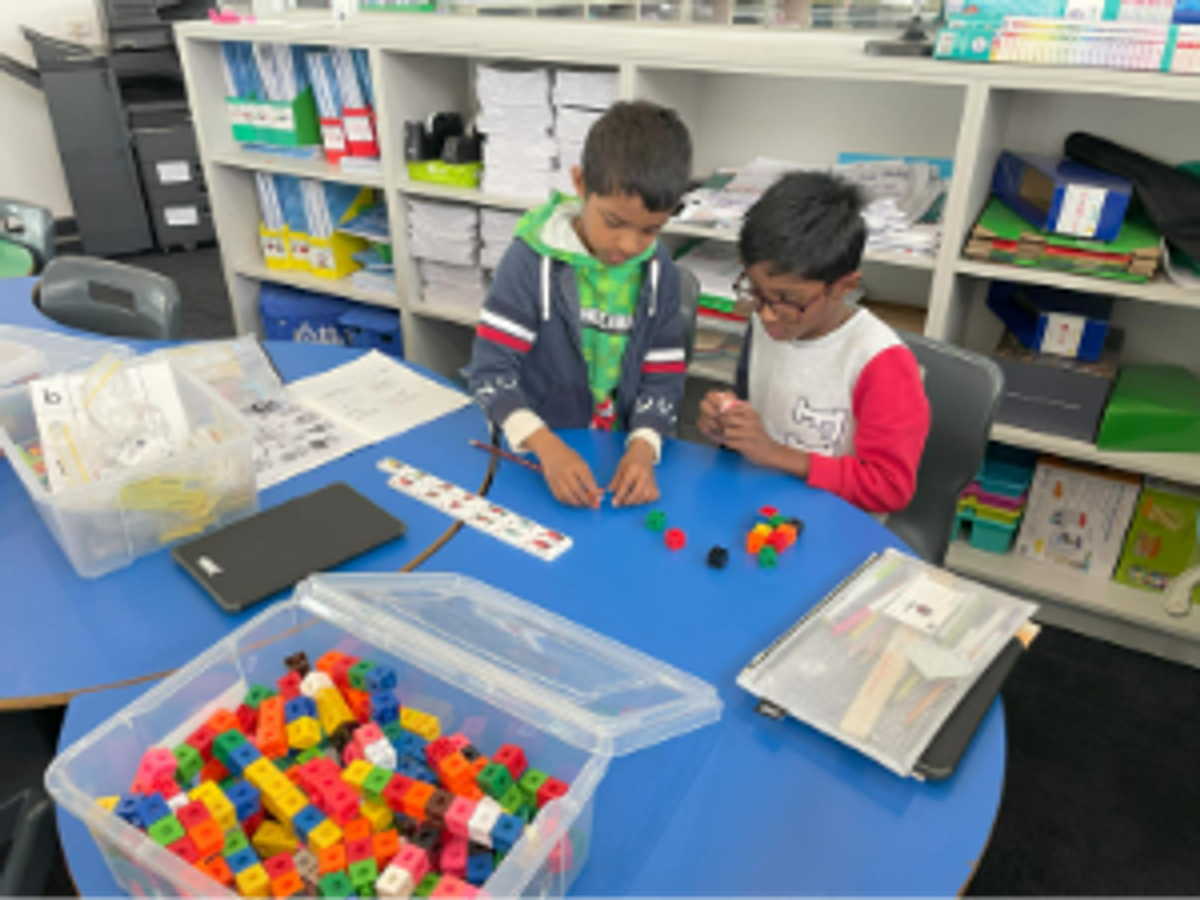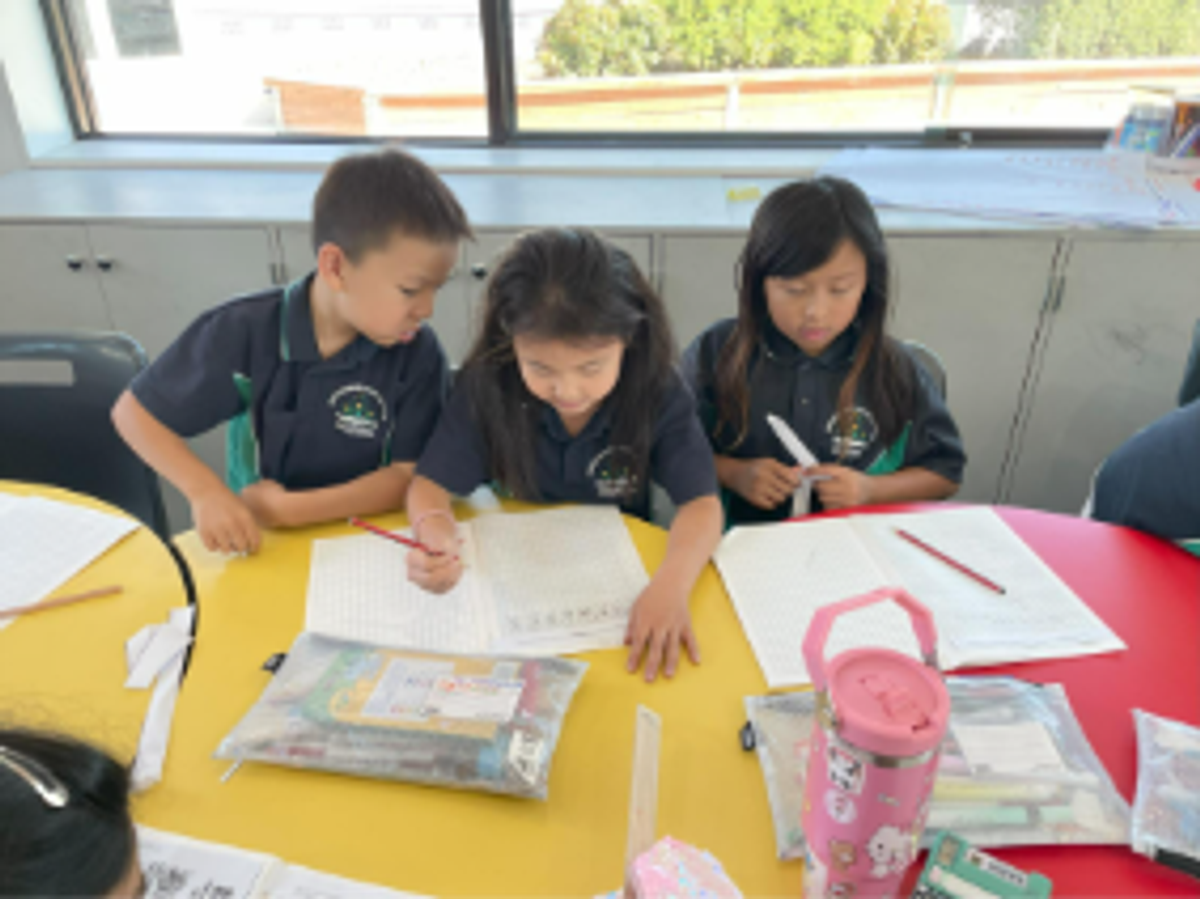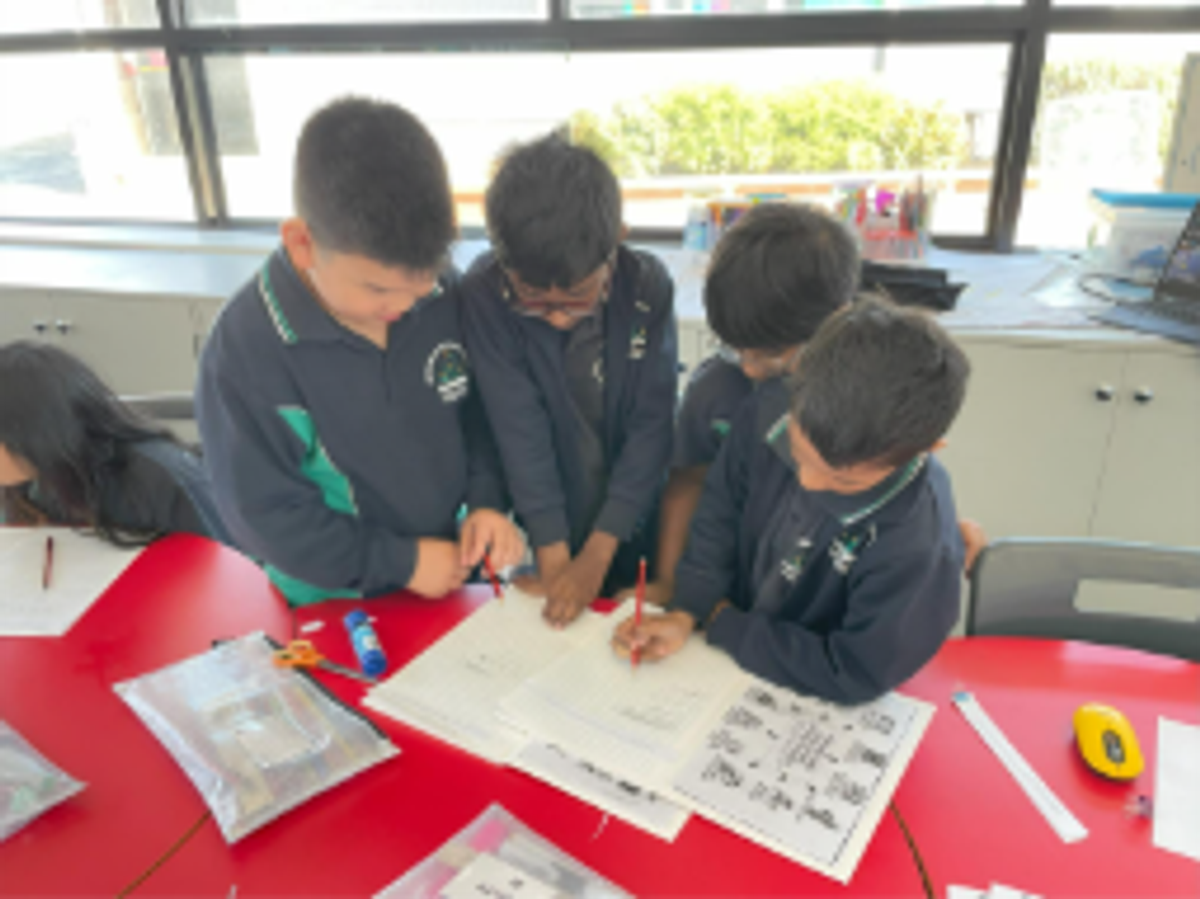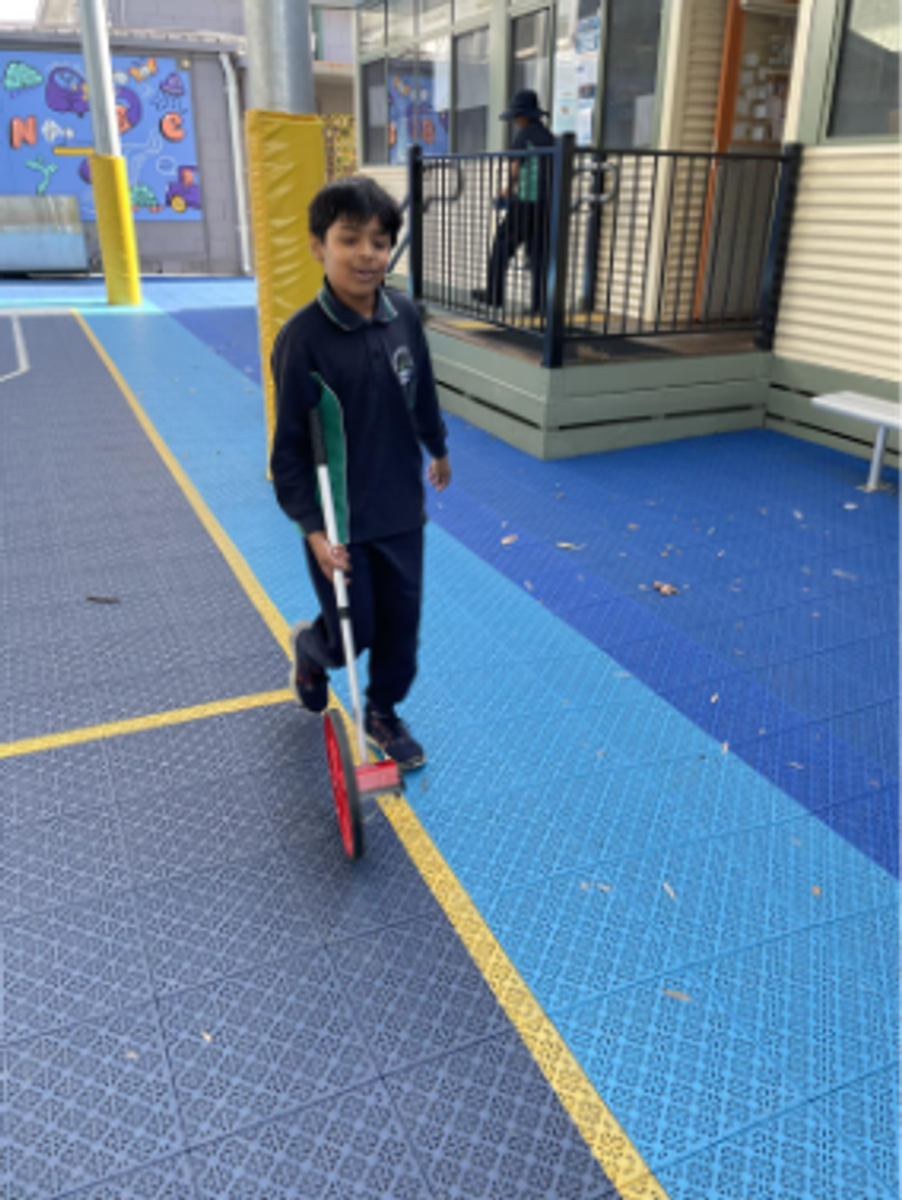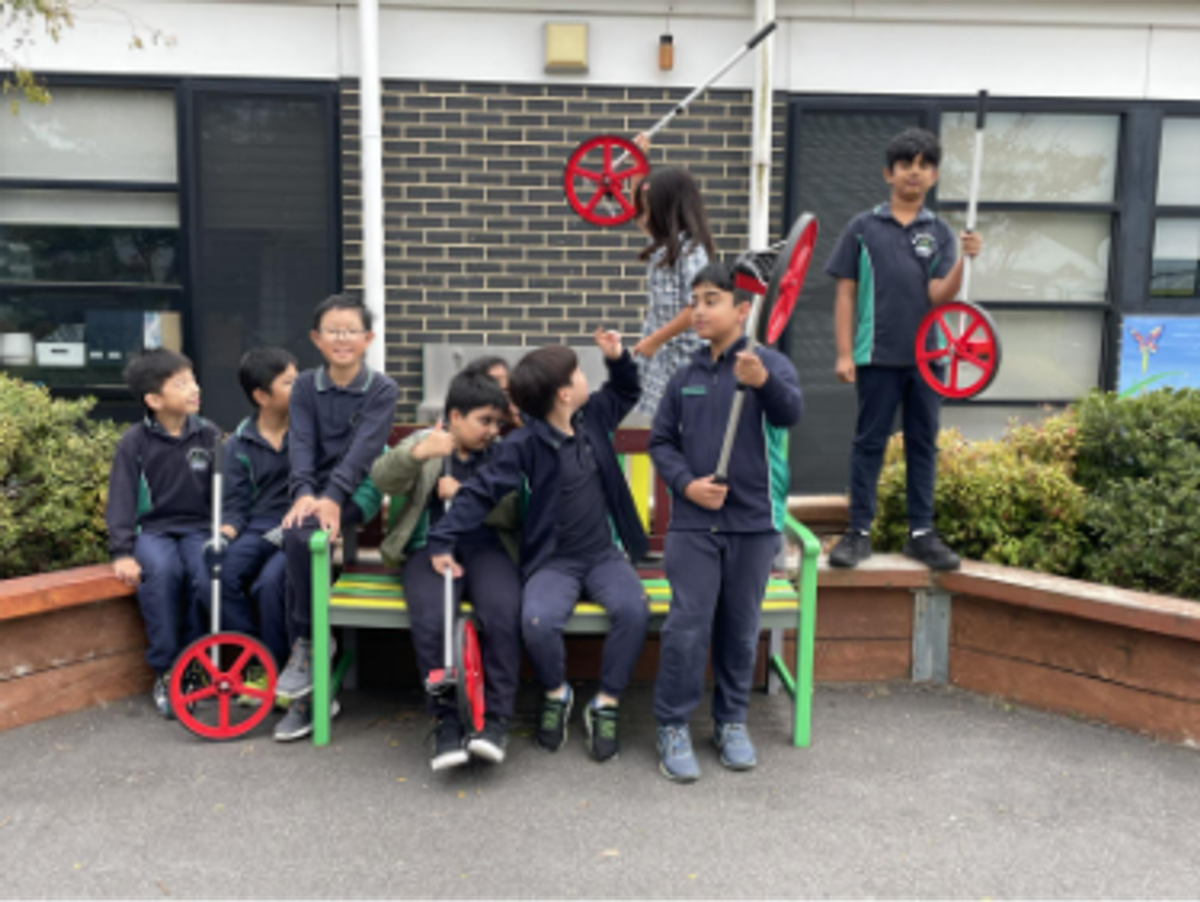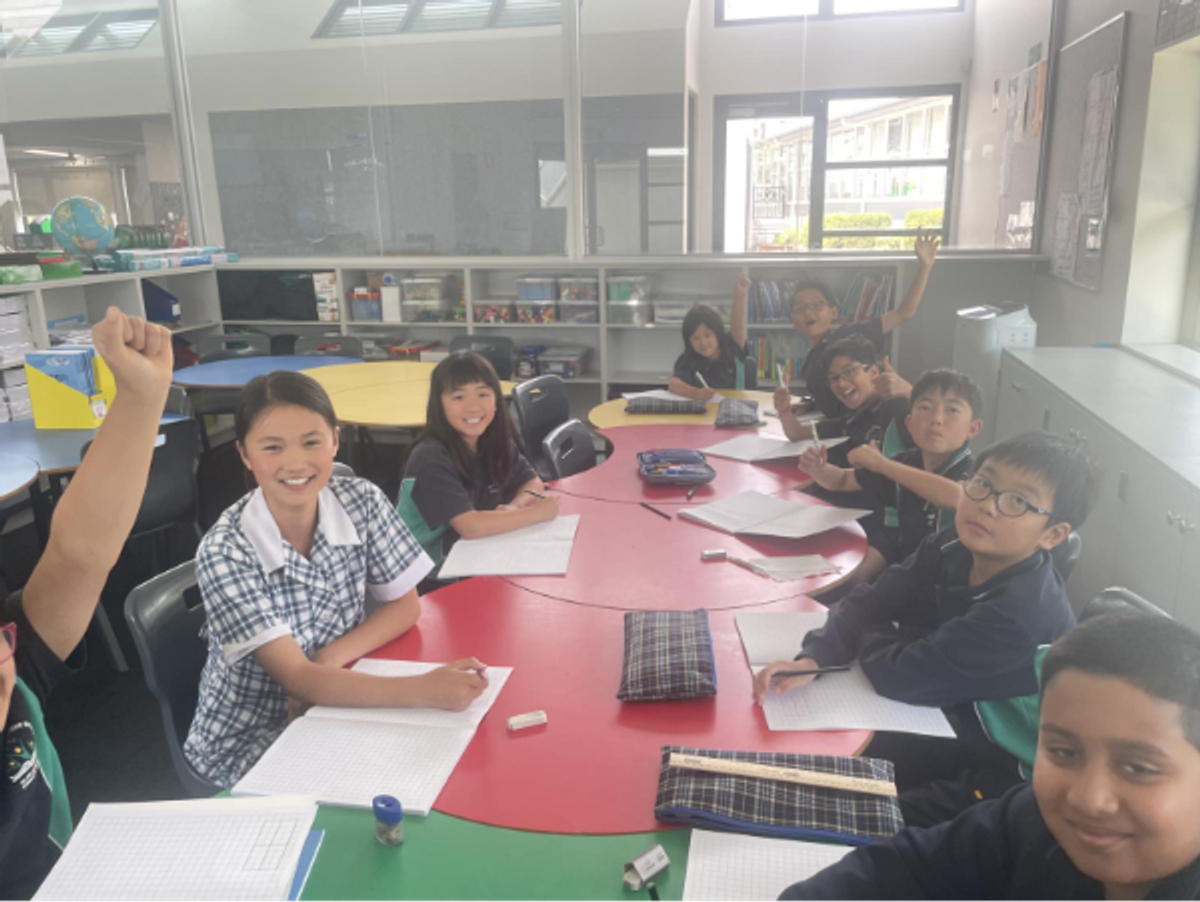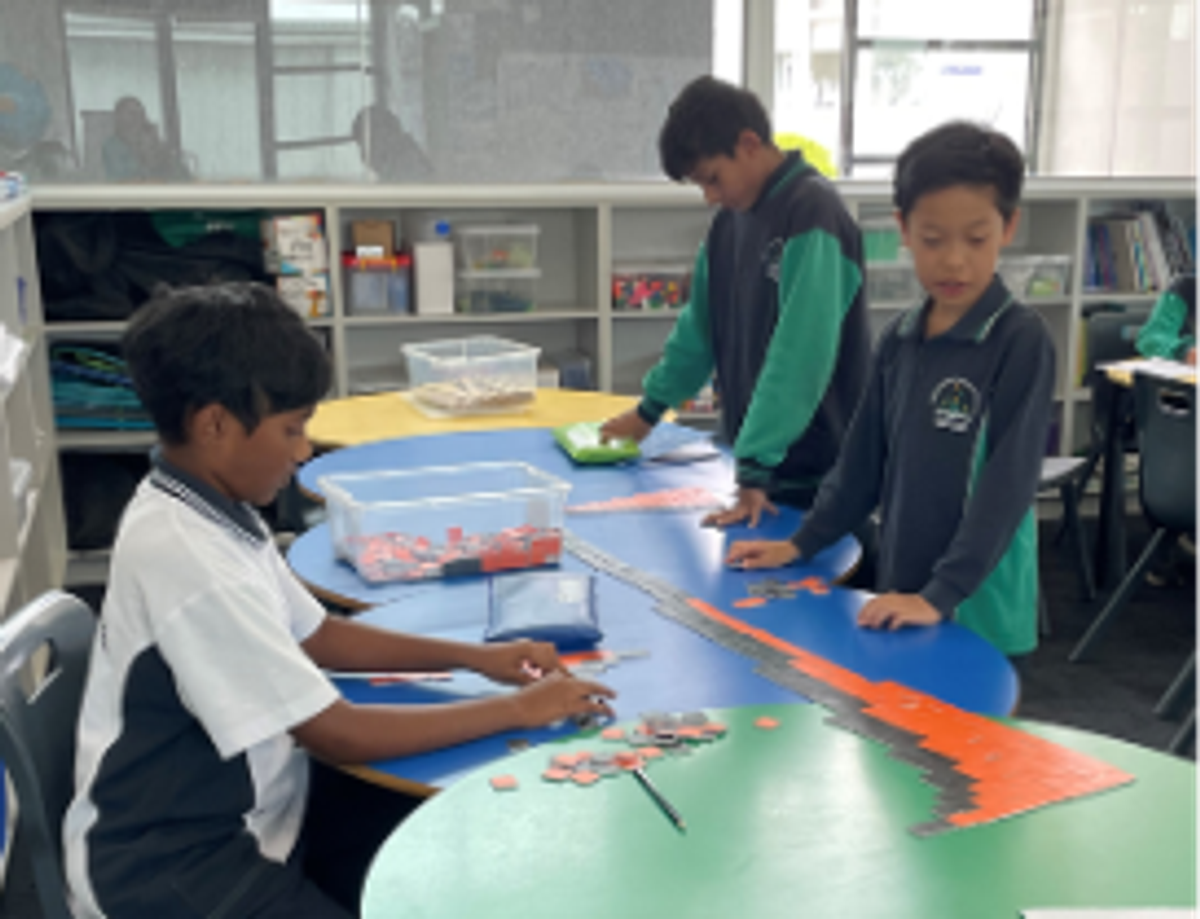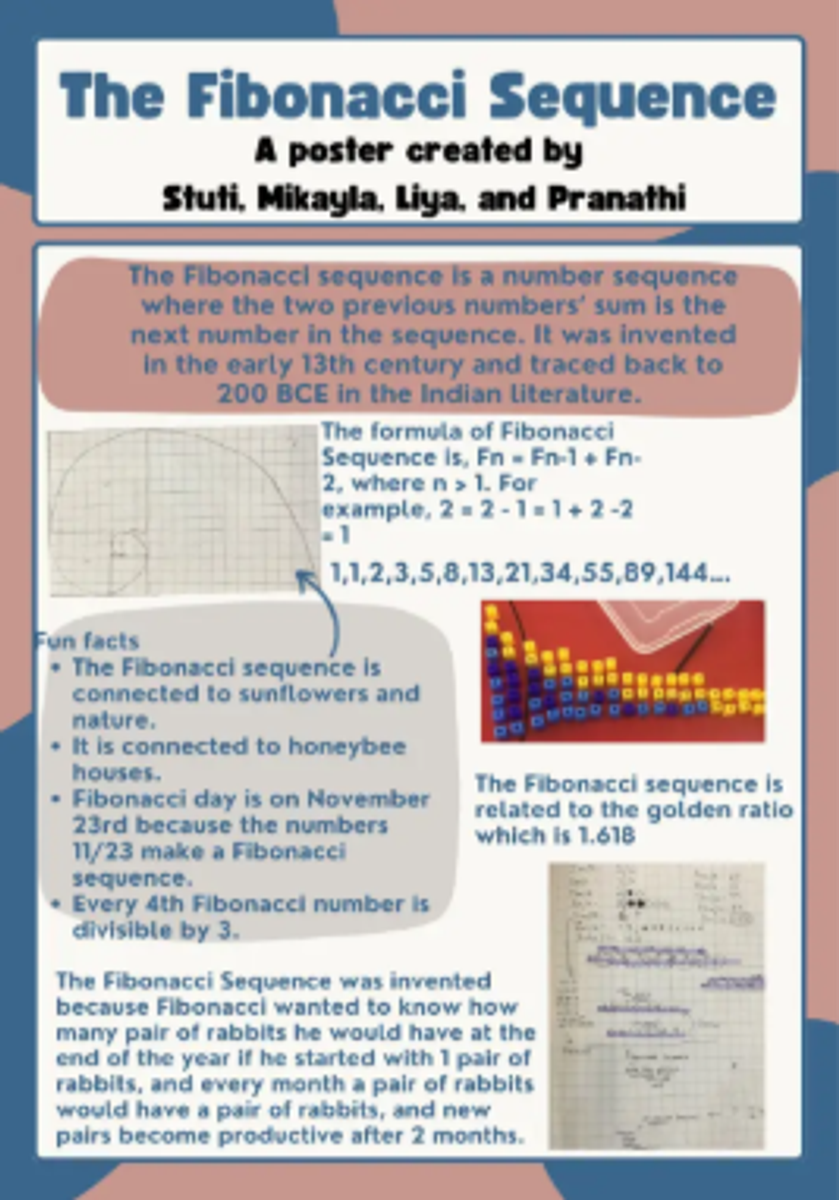Maths Innovation
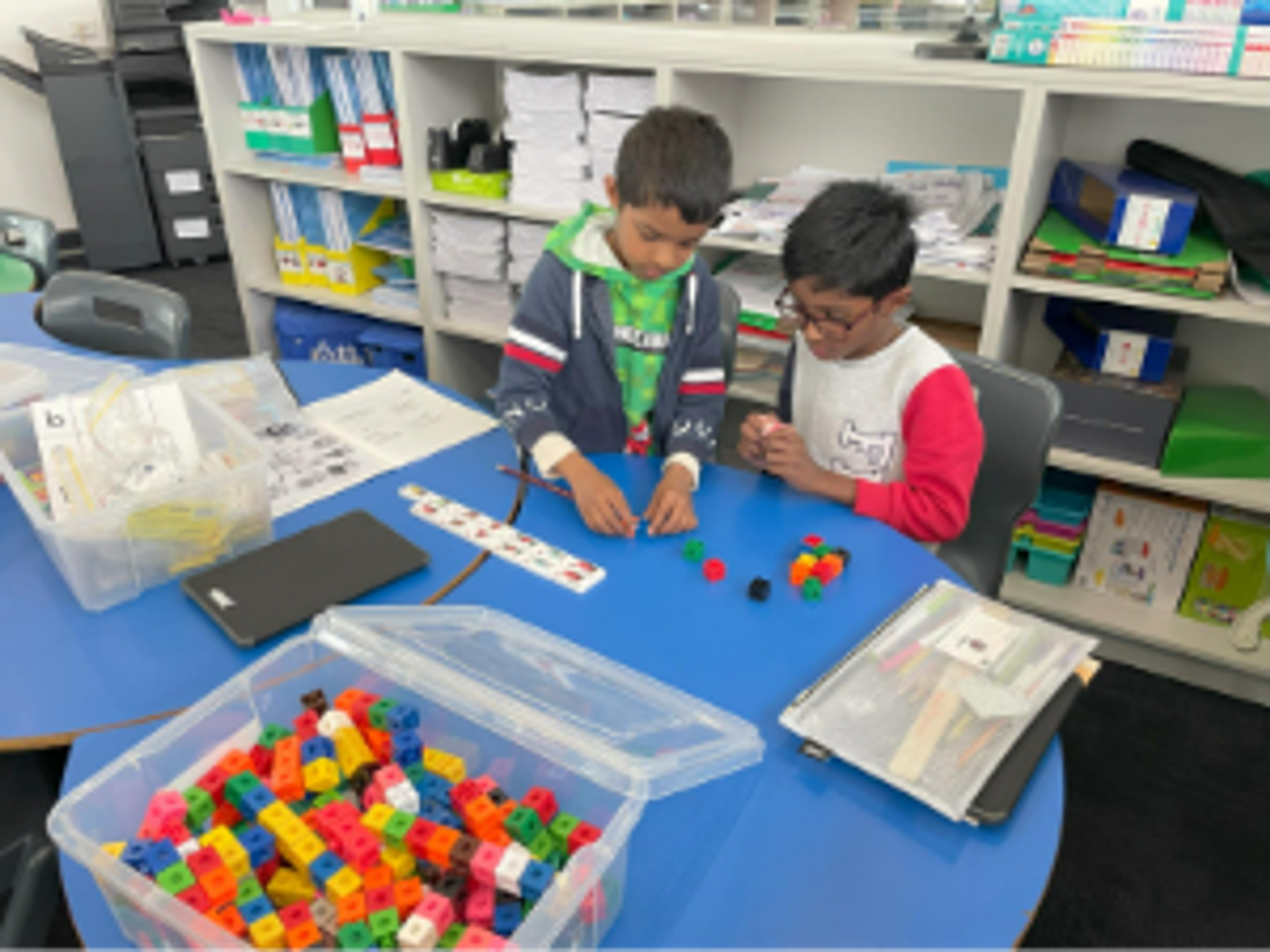
Year level: 2
In Year 2 Maths Innovation lessons this term, students will be deepening their understanding of measurement and the four operations – addition, subtraction, multiplication and division. By combining measurement with the four operations students will explore hands-on learning that taps into their natural curiosity about the human body. Guided by their own wonderings, students will explore fascinating questions like How fast can I run? How heavy are my bones? and How many of me is as tall as a house? These investigations will not only stretch their mathematical thinking but also encourage creativity and problem-solving as they apply measurement in meaningful, personal ways. I can’t wait to see their engagement and enthusiasm grow as they discover how maths connects to the world around (and within) them!
Year level: 3
In Year 3 Maths Innovation, students will be working on their goals to develop the important traits of an innovator: Courageous, Determined, Reflective, Collaborative and Visionary. They will be exploring how to solve complex worded problems as the participate in the Maths Games. During lessons they will be applying strategies of ‘CUBES’ and ‘RUCSAC’ to support them to understand the important information, what the question is asking them to do and to check that their answer is reasonable. Throughout this learning, innovators will focus on problem solving in a collaborative manner and using strategies to work through multi-step questions. A key element to this learning will also be transferring their knowledge into elements of coding.
Year level: 4
In Year 4 Maths Innovation, students will be working on their goals to develop the important traits of an innovator: Courageous, Determined, Reflective, Collaborative and Visionary. They will be exploring how to solve complex worded problems as the participate in the Maths Games. During lessons they will be applying strategies of ‘CUBES’ and ‘RUCSAC’ to support them to understand the important information, what the question is asking them to do and to check that their answer is reasonable. As students explore features of numbers, they will evaluate the factors of numbers and apply the divisibility rules for numbers up to ten. Additionally, they will be employing measurement and calculation skill as they evaluate the area and volume of a range of shapes.
Year level: 5
As students in Year 5 Maths Innovation, embark on their learning this term, they will continue to explore and apply the traits that successful innovators employ. In particular, they will focus on being Courageous, Determined, Reflective, Collaborative and Visionary. In connection with their inquiry this term, students will be considering how mathematics can be used to evaluate and explore aspects of the environment. They will estimate the number of leaves on a tree, the surface area of a leaf and therefore the total surface area of all leaves. Students will be encouraged to consider the contribution of a tree to the atmospheric oxygen. Connected to this, students will also estimate the number of breaths they take daily, and the amount of oxygen required for this to occur. Additionally, students will explore location, shape and location knowledge through investigation of patterns called ‘Spiorolaterals’, allowing them to use location, shape and angle knowledge. These shapes will be further explored using the programming of robots. Students will undertake investigations into speed through measurements and calculations.
Year level: 6
This term students in Year 6 Maths Innovation are excited to be embarking on a collaboration with the Year 6 STEAM Innovation students. Together they will continue to explore and apply the traits that successful innovators employ, such as being Courageous, Determined, Reflective, Collaborative and Visionary. The students will undertake a term of learning about Aviation including the history, the theory of flight and the mathematical calculations to justify their thinking. They will conduct a variety of experiments and collaborate with a partner to build and fly aircraft constructed using basla wood and electrical components. By synthesising the theory of flight and evaluating the outcome of experiments, they will have the opportunity to modify their aircraft to improve particular features of flight.
